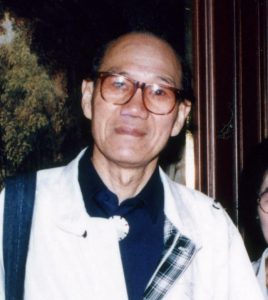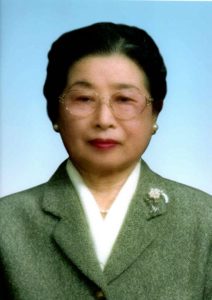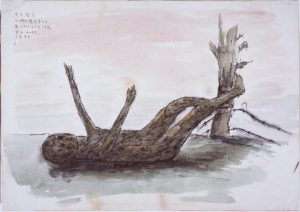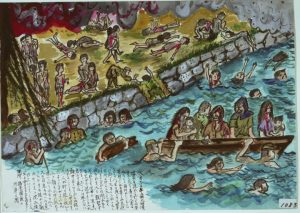Nihon Hidankyo awarded Nobel Peace Prize: Embracing thoughts of survivors, “A-bomb drawings” to be displayed in Oslo starting December 11
Dec. 8, 2024
While drawings express tragedy and inhumanity, bereaved families call for peace
by Michio Shimotaka, Staff Writer
The “A-bomb drawings” created by survivors of the atomic bombings will be introduced at an exhibition held at the Nobel Peace Center in Oslo, Norway, in conjunction with the awarding of the Nobel Peace Prize to the Japan Confederation of A- and H-Bomb Sufferers Organizations (Nihon Hidankyo). The drawings all depict scenes revealing the tragedy of the bombings and denounce the inhumanity of nuclear weapons. Bereaved family members of the art’s creators shared their hopes for the exhibition. “The drawings should provide an opportunity for people to think about why such a tragedy happened,” they said, adding, “We’d like people to embrace the thoughts of A-bomb survivors and travel a path toward peace.”
Masato Yamashita, who died in 1995 at the age of 70, created a drawing of the charred body of a young boy lying on his back. It is thought that Mr. Yamashita witnessed the body while visiting the area of Motomachi (in Hiroshima’s present-day Naka Ward) from his home in the town of Saka-cho in Hiroshima Prefecture to search for his brother, Atsumu, who was two years younger than he. Mr. Yamashita’s oldest daughter, Rie Yonemata, 69, a resident of the city’s Nishi Ward, shared how she interpreted her father’s work. “His drawing makes me want to turn away, but I think it was a reality for him that he could not communicate in words,” said Ms. Yonemata.
Atsumu experienced the atomic bombing while engaged in building-demolition work to create fire lanes in the area of Dobashi-cho (in Hiroshima’s present-day Naka Ward). After spending time at a relief station, he returned home around August 20, 1945, later vomiting blood and dying on August 31. In his personal account, Mr. Yamashita wrote about his brother’s death. “He died with unbearable hatred of ‘pika’ [the Japanese vernacular for the flash generated by the atomic bombing], those who started the war, and those who failed to stop the war.”
A drawing of people dying along a river and those diving into it in search of water was created by Yoko Suga, who died in 2011 at the age of 80. When Ms. Suga was a second-year student at Hiroshima Jogakuin High School (present-day Hiroshima Jogakuin Junior and Senior High School, in Hiroshima’s Naka Ward), she experienced the atomic bombing at school while studying on her own. She drew the horrific scene she witnessed on the northern side of Shukkeien Garden, located near her school. Later, she recalled her experience in the atomic bombing in a video recorded by the Hiroshima National Peace Memorial Hall for the Atomic Bomb Victims, saying, “The reality was far worse.”
Ms. Suga lost her father, Masayoshi Tagami, 54 at the time, who had experienced the atomic bombing at their home in the area of Hijiyama-honmachi (in Hiroshima’s present-day Minami Ward). She suffered hair loss and other acute symptoms soon after the bombing and, later after the war, endured miscarriage, heart disease, and cancer, among other health issues. Her oldest son, Takafuji Suga, 69, a resident of the city’s Minami Ward, speculated about his mother’s feelings. “I assume she must have wondered why she had to suffer her entire life, when she had done nothing wrong herself,” said Mr. Suga.
Ms. Suga explained in the video, “I truly hope that sharing my experiences in the atomic bombing will help ensure everlasting peace.”
The Hiroshima Peace Memorial Museum, located in Hiroshima’s Naka Ward, provided the electronic image data for 13 A-bomb drawings to the Nobel Peace Center. The postcard-size, color-printed drawings will be displayed in the exhibition for around one year starting December 11, the day after the award ceremony, in a way that is readily accessible by visitors.
(Originally published on December 8, 2024)











